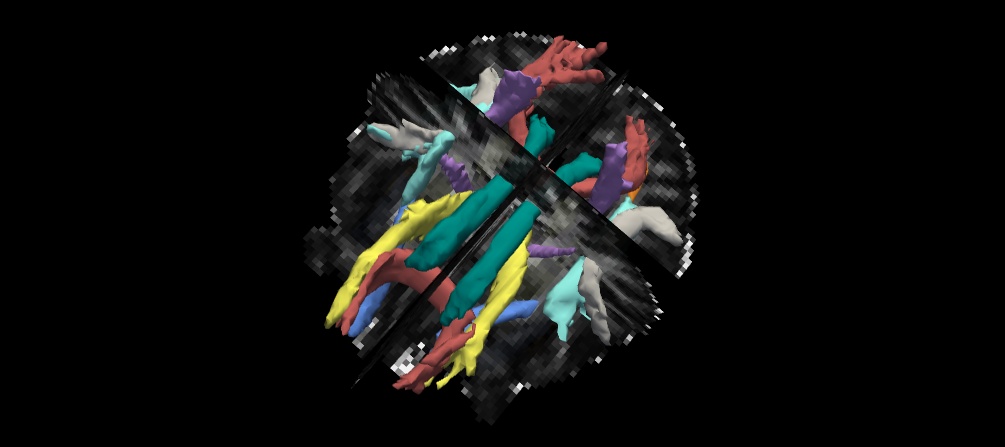TRACULA: TRActs Contrained by UnderLying Anatomy
TRACULA is a tool for automatic reconstruction of a set of major white-matter pathways from diffusion-weighted MR images. It uses global probabilistic tractography with anatomical priors. Prior distributions on the neighboring anatomical structures of each pathway are derived from an atlas and combined with the FreeSurfer cortical parcellation and subcortical segmentation of the subject that is being analyzed to constrain the tractography solutions. This obviates the need for user interaction, e.g., to draw ROIs manually or to set thresholds on path angle and length, and thus automates the application of tractography to large datasets.

Documentation
All necessary preprocessing of the diffusion-weighted images and reconstruction of the pathways is done by the trac-all script. Several options for this analysis stream can be set by the user in a configuration file (dmrirc file), which is passed as an argument to trac-all. For more information, see:
Trac-all is used to preprocess raw diffusion data (correcting for eddy current distortion and B0 field inhomogenities), register them to common spaces, model and reconstruct major white matter pathways (included in the atlas) without any manual intervention. trac-all may be used to execute all the above steps or parts of it depending on the dataset and user's preference for analyzing diffusion data. Alternatively, scripts exist to execute chunks of each processing pipeline, and individual commands may be run to execute a single processing step.
Note that, because TRACULA relies on the underlying anatomy as derived from the FreeSurfer cortical parcellation and subcortical segmentation, these need to be generated before running trac-all. This means that before running trac-all you will have to analyze your subjects' structural images with recon-all and make sure that they have a good-quality mri/aparc+aseg.mgz.
Tutorials
For step by step instruction on how to set up and run TRACULA, please refer to the relevant tutorials from the FreeSurfer training workshops:
Reference
Automated probabilistic reconstruction of white-matter pathways in health and disease using an atlas of the underlying anatomy. Yendiki A, Panneck P, Srinivasan P, Stevens A, Zöllei L, Augustinack J, Wang R, Salat D, Ehrlich S, Behrens T, Jbabdi S, Gollub R and Fischl B (2011). Front. Neuroinform. 5:23. doi: 10.3389/fninf.2011.00023
